Untalented written 10 animals that will startle you
Here are 10 Bizarre Creatures of the Amazon Rainforest:
- Candiru Fish
The Amazon rainforest is home to a startling array of different species
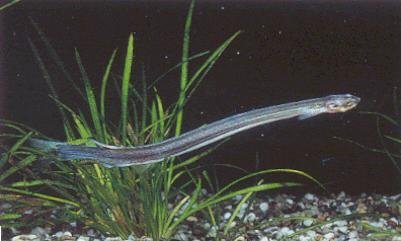
The candiru fish, also known as cañero, toothpick fish, or vampire fish, is a species of parasitic freshwater catfish. Adults can grow up to 16 inches in length, and can be found throughout the Amazon basin. Candirus are known to parasitize the gills of larger fishes and feed off the blood. Shockingly, there have even been reports of candiru entering the urethra of human males! But don’t cancel those flights just yet, these reports are always shrouded in controversy, and many people disregard these incidents as myths.
- Potoo
The Amazon rainforest is home to a startling array of different species
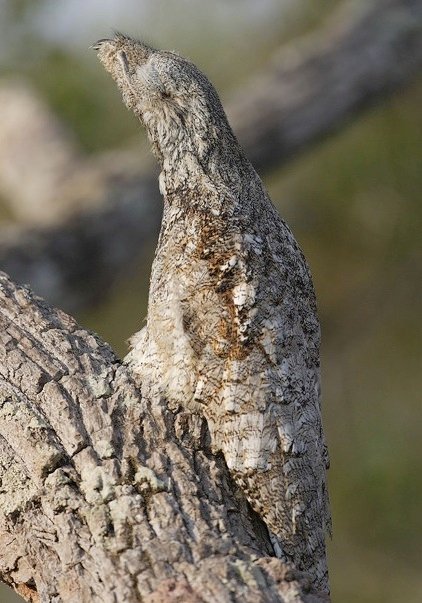
Potoos are a group of birds related to nightjars and frogmouths, and are found throughout the Amazon rainforest. Masters of disguise, they are nocturnal creatures that spend the days motionless, with eyes half open, perched upon the stumps of broken branches. Their stump will be chosen wisely, as it will be the home of their single egg, whose incubating duties are shared by both the male and female in shifts. You will be very lucky to see one however, as their camouflage is extremely effective, especially when combined with their lifeless pose.
- Glass Frog
The Amazon rainforest is home to a startling array of different species
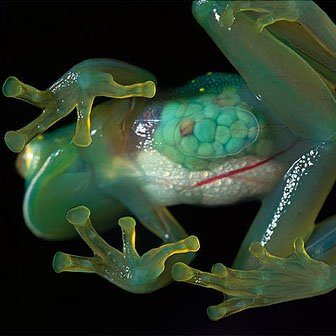
Glass frogs are members of the Centrolenidae family. While generally green in colour, what makes them so intriguing is that their internal organs are visible through the translucent skin on the underside of their body, which takes on the hue of the frogs surroundings, thus making it difficult to see for any would-be predators. They are generally small creatures that range anywhere from 1.2 to 3 inches in length, and have been known to eat their young.
- Jesus Lizard
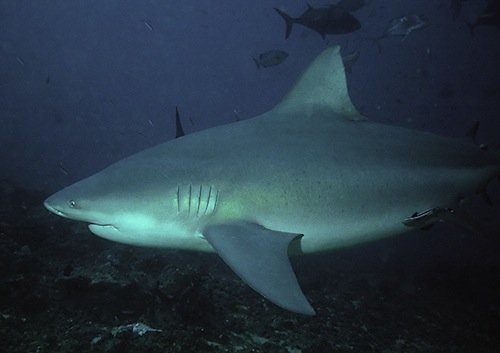
The Jesus Lizard, or common basilisk, has the incredible ability of being able to run on water, hence its name. When fleeing from predators, the lizard opens its toes to reveal a special webbing, and with enough momentum, is able to successfully run across the surface for up to 20 meters! They are found throughout rainforests in Central and north-western South America, usually near water at low elevation.
- Bull Shark

While normally a salt-water dwelling creature, bull sharks have been spotted in the freshwaters of the Amazon as far up as Iquitos (almost 2,500 miles from the sea)! Bull sharks are big and heavy, adult females can reach 11 feet in length, and weigh up to 690 lbs. They are able to adapt to either fresh or salt-water environments, and could spend a lifetime in a river system, if it weren’t for the necessity of mating. Many experts have labelled bull sharks the most dangerous shark in the world, and are probably responsible for the majority of near coast shark attacks.
- Decoy Building Spider

Only recently discovered, the decoy building spider is thought to belong to the genus Cyclosa. This fascinating arachnid is actually incredibly small, around 5mm in length, but assembles a much larger decoy spider in its web, complete with multiple legs, from dead leaves and debris. It was first discovered at the Tambopata Research Center, and although further investigation is necessary to confirm this, it is thought to be a previously unknown species.
- Capybara
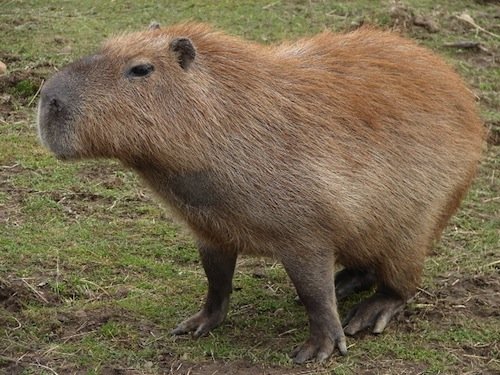
Capybara are the largest rodents in the world, weighing up to 200lbs! They are very social animals and can be found in groups of 100 strong, however usually the groups range from 10 – 20. Preferred prey of anacondas, jaguars, ocelots, pumas, and caimans, they have a young average life span of just four years. As herbivores, they pose no danger to humans.
- Arapaima

The arapaima, also known locally as ‘paiche’ (a combination of the indigenous words for red and fish), is the largest freshwater fish in South America. Some larger specimens can be over 2.5 meters in length, and weigh over 100kg. The largest recorded specimen was an incredible 4.52 meters! As well as having gills, arapaima need to surface every 5 – 15 minutes to breathe air into their enlarged and modified swim bladder, which is composed of lung like tissue. Some locals use its bony scales as nail files, and the tongue is thought to have medicinal qualities, used to kill intestinal worms when mixed into a drink with guarana.
- Electric Eel
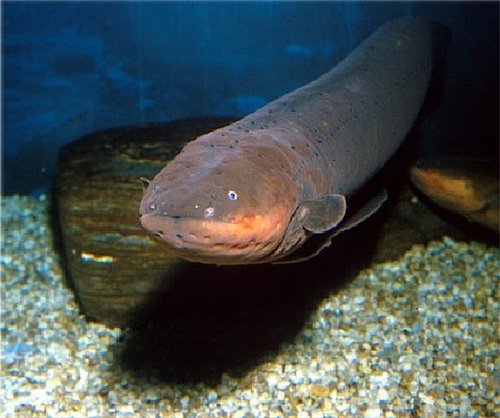
The electric is in the only known species in the genus of electric fish. Despite its name, it is not actually an eel, rather a knife fish. In fact, they are actually more closely related to catfish than they are to eels. They are able to produce powerful electric shocks of up to 600 volts as a defence mechanism, and for hunting. Known for their unusual breeding behaviour, in the dry season, the male constructs a nest from his saliva into which the female lays her eggs. As many as 3,000 young can hatch from the eggs of one female. That’s a lot of combined volts!
- Pink Dolphin

Probably the most famous residents of the Amazon river, the Amazon river dolphin, or boto, can grow larger than a human. It is unknown exactly why these river dolphins develop their distinct pink colouration, but it is thought it is due to blood capillaries near the surface of the skin. The subject of an interesting legend, it is believed that in the evening, the River Dolphin can transform itself into a man, hypnotizing and seducing unsuspecting, young women.